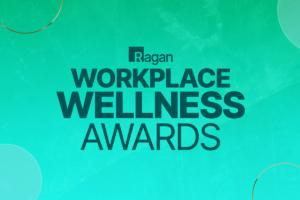4 ways to support caregivers and employees with disabilities in the workplace
Create an inclusive workplace culture by developing awareness, offering trainings and fostering community.

One in four adults in the U.S. have some type of disability according to the Centers for Disease Control and Prevention. More than one in five Americans are caregivers — 25.4% of women compared to 18.9% of men — to adults or children with special needs.
These statistics suggest that disability likely touches the lives of most employees in some capacity.

Jessica Tuman, head of environment, social responsibility and governance (ESG) and Voya Cares Center of Excellence, explains that Voya Financial realized this was an underserved market. The company saw the size of the community impacted by disability and realized there needs to be tools to support retirement and financial planning for those in this situation. This is especially true for what Tuman calls “sandwich caregivers,” who have a child with a disability as well as aging parents who are living longer and need support.
So, what can an employers provide to create a workplace culture that supports employees with disabilities — visible and invisible — and caregivers? Tuman shares four ideas:
1. Build an inclusive culture.
A supportive and inclusive culture starts with awareness.
This can begin with leadership updating hiring practices and outreach efforts. Voya Financial has a dedicated recruiter for people with disabilities, which may not be feasible for all organizations. But Tuman explains that employers can be more accommodating when it comes to the interview process.
“There is a nuanced way to do interviews, especially for people with neuro-diversity issues like autism,” she says. “They may not connect over the phone, so this is a style that you adopt to interview them.”
To ensure employees are also fostering an inclusive culture, offer trainings on appropriate language use, suggests Tuman. Her recommendation is “people-first language” that brings “out the human first before we label the disability.” Voya Financial has its new hires go through disability etiquette training.
Also, ensure there is organization-wide understanding around the challenges for employees who are caregivers. And dispel stereotypes that those who may have or need flexible work arrangements are less dedicated to their jobs.
2. Remote work and other accommodations open doors.
A silver lining to the COVID-19 pandemic for those with disabilities and caregiving responsibilities is that many organizations are hiring for remote positions, which removes the transportation barrier for many. This remote work or hiring environment also removes some of the stereotypical views and biases people have around disabilities. For instance, no one would know if an employee is in a wheelchair on most video calls, explains Tuman.
Tuman also believes there are misconceptions from employers about the physical accommodations they will be expected to provide to employees with disabilities, such as only envisioning changes to the physical office building. In fact, the Americans with Disabilities Act requires “reasonable accommodations” be made by employers, which could include offering accessible parking near the office or providing feedback in writing rather than only verbally.
For caregivers, accommodations may include flexible scheduling or offering a Dependent Care Assistance Plan that functions similar to Flexible Spending Accounts but allows employees to set aside tax-free funds to help pay for the care of qualified dependents.
3. Support employees in bringing their ‘whole selves’ to work.
Some employees may avoid disclosing their invisible disability or caregiver status due to fear of stigma. Tuman thinks there needs to be a further push toward “bringing your whole self to work” through a culture of inclusion and a flexible environment.
“It’s really, really important for employers to have self-identification campaigns — self-identifying yourself as a person with a disability or a caregiver — because that really opens the doors to having that conversation,” she says.
Another way employers can support employees bringing their whole selves to work is to have employee resource groups or affinity groups for people with disabilities and caregivers. Not only do these groups create further awareness, Tuman says, but they can be a place of community and support around sharing local or helpful resources.
4. Why you should consider offering a caregiving service as an employee benefit.
Beyond offering flexibility, employers may want to consider offering access to a caregiving and concierge service.
Such a service helps employees find solutions for caregiving issues that can take up so much time and energy, often during work hours, because that’s when places like the Social Security office are open. A caregiving service can also help navigate medical issues, health insurance companies, government entities and even legal issues, Tuman says.
Tuman explains there are many of these services available — Voya has a relationship with Wellthy for its employees — and that the “ROI on these things are phenomenal for they allow employees to stay in the workplace.”
“That is something that really helps retain employees, and we’ve gotten some incredibly favorable feedback on those types of services because we’re at a loss,” she adds. “There’s no guidance for this for most employees, so having that support is critical.”
COMMENT
Ragan.com Daily Headlines
RECOMMENDED READING
Tags: accommodations, caregivers, disabilities, ERGs, flexible work, inclusion, inclusive language, remote work, Voya Financial






